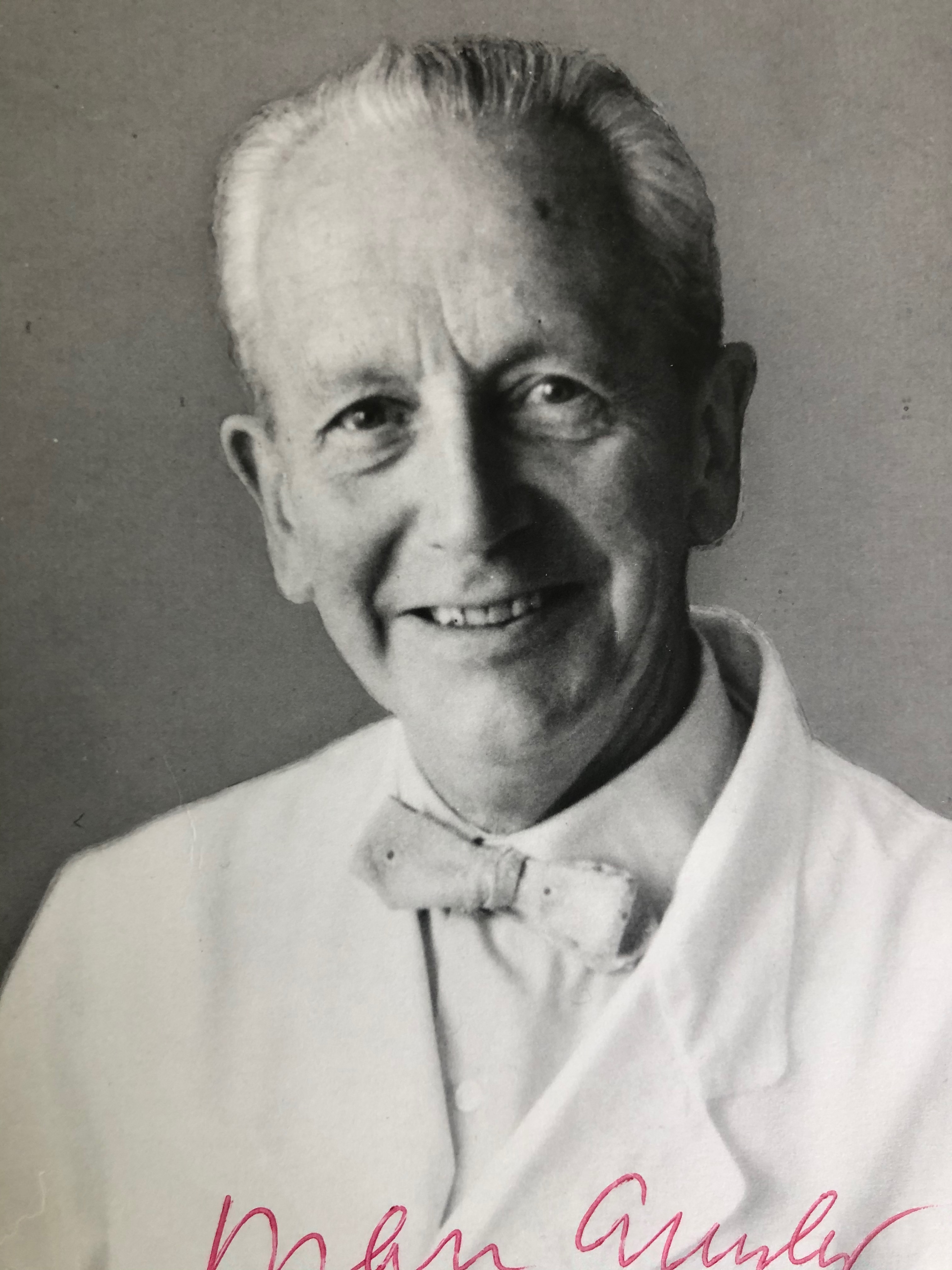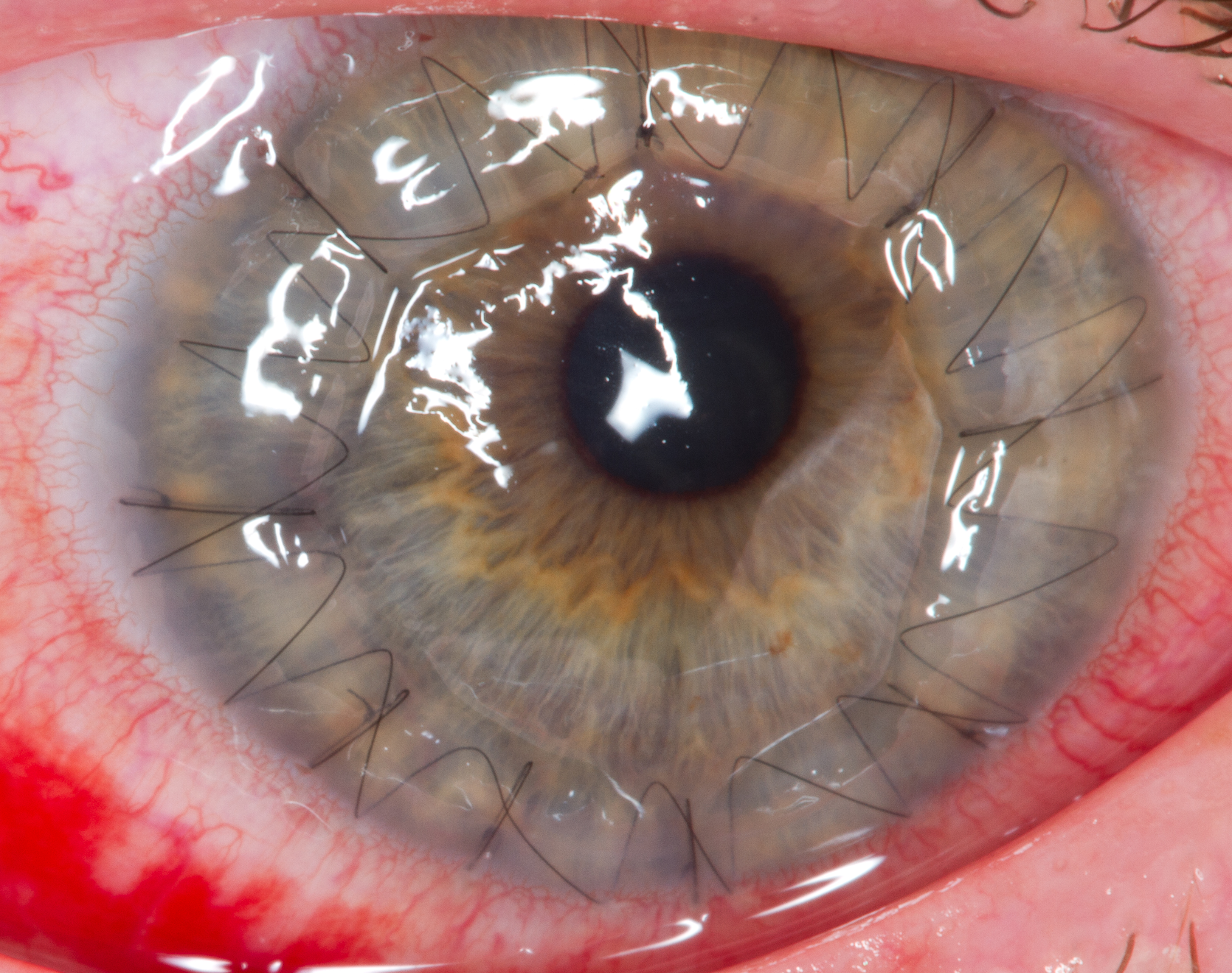|
Marc Amsler
Marc Amsler (born 5 February 1891 in Vevey, Switzerland – died 3 May 1968) was a professor of ophthalmology in the Eye Clinic at the University of Zurich. He took the position as professor of ophthalmology in Zurich in 1944. His predecessor was Prof. Alfred Vogt. Prior to assuming the position at Zurich, Dr. Amsler was chief ophthalmologist in Lausanne, since 1935. His predecessor there, under whom he worked beforehand, was Jules Gonin. During his time in Lausanne, Amsler was instrumental in creating the Jules Gonin Medal which is awarded every four years and is considered the highest honor in ophthalmology.Landau, D; Bigar, F; Landau K. Die Geschichte der Zürcher Augenklinik von 1907 bis 2007. Bottighofen, Switzerland 2012, p. 76 Amsler was professor and chief of the Zurich Eye Clinic until 1961. His successor was Rudolf Witmer. He is best known for the Amsler grid test. The Amsler grid was an improvement over the initial work done by the ophthalmologist Edmond Lando ... [...More Info...] [...Related Items...] OR: [Wikipedia] [Google] [Baidu] |
Marc Amsler 1949
Marc or MARC may refer to: People * Marc (given name), people with the first name * Marc (surname), people with the family name Acronyms * MARC standards, a data format used for library cataloging, * MARC Train, a regional commuter rail system of the State of Maryland, serving Maryland, Washington, D.C., and eastern West Virginia * MARC (archive), a computer-related mailing list archive * M/A/R/C Research, a marketing research and consulting firm * Massachusetts Animal Rights Coalition, a non-profit, volunteer organization * Matador Automatic Radar Control, a guidance system for the Martin MGM-1 Matador cruise missile * Mid-America Regional Council, the Council of Governments and the Metropolitan Planning Organization for the bistate Kansas City region * Midwest Association for Race Cars, a former American stock car racing organization * Revolutionary Agrarian Movement of the Bolivian Peasantry (''Movimiento Agrario Revolucionario del Campesinado Boliviano''), a defunct right-wi ... [...More Info...] [...Related Items...] OR: [Wikipedia] [Google] [Baidu] |
Metamorphopsia
Metamorphopsia (from , ) is a type of distorted vision in which a grid of straight lines appears wavy and parts of the grid may appear blank. People can first notice they suffer with the condition when looking at mini-blinds in their home. For example, straight lines might be wavy or bendy. Things may appear closer or further than they are. Initially characterized in the 1800s, metamorphopsia was described as one of the primary and most notable indications of myopic and senile maculopathies. Metamorphopsia can present itself as unbalanced vision, resulting from small unintentional movements of the eye as it tries to stabilize the field of vision. Metamorphopsia can also lead to the misrepresentation of an object’s size or shape. It is mainly associated with macular degeneration, particularly age-related macular degeneration with choroidal neovascularization. 80%)—deposition of yellowish extracellular material in and between Bruch's membrane and retinal pigment epitheliu ... [...More Info...] [...Related Items...] OR: [Wikipedia] [Google] [Baidu] |
1968 Deaths
The year was highlighted by protests and other unrests that occurred worldwide. Events January–February * January 5 – " Prague Spring": Alexander Dubček is chosen as leader of the Communist Party of Czechoslovakia. * January 10 – John Gorton is sworn in as 19th Prime Minister of Australia, taking over from John McEwen after being elected leader of the Liberal Party the previous day, following the disappearance of Harold Holt. Gorton becomes the only Senator to become Prime Minister, though he immediately transfers to the House of Representatives through the 1968 Higgins by-election in Holt's vacant seat. * January 15 – The 1968 Belice earthquake in Sicily kills 380 and injures around 1,000. * January 21 ** Vietnam War: Battle of Khe Sanh – One of the most publicized and controversial battles of the war begins, ending on April 8. ** 1968 Thule Air Base B-52 crash: A U.S. B-52 Stratofortress crashes in Greenland, discharging 4 nuclear ... [...More Info...] [...Related Items...] OR: [Wikipedia] [Google] [Baidu] |
Swiss Ophthalmologists
Swiss may refer to: * the adjectival form of Switzerland * Swiss people Places *Swiss, Missouri *Swiss, North Carolina * Swiss, West Virginia * Swiss, Wisconsin Other uses *Swiss-system tournament, in various games and sports *Swiss International Air Lines **Swiss Global Air Lines, a subsidiary *Swissair, former national air line of Switzerland *.swiss alternative TLD for Switzerland See also *Swiss made, label for Swiss products *Swiss cheese (other) *Switzerland (other) *Languages of Switzerland, none of which are called "Swiss" *International Typographic Style, also known as Swiss Style, in graphic design *Schweizer (other), meaning Swiss in German *Schweitzer Schweitzer is a surname. Notable people with the surname include: * Albert Schweitzer, German theologian, musician, physician, and medical missionary, winner of the 1952 Nobel Peace Prize * Anton Schweitzer, opera composer * Brian Schweitzer, forme ..., a family name meaning Swiss in German * ... [...More Info...] [...Related Items...] OR: [Wikipedia] [Google] [Baidu] |
University Of Zurich Faculty
A university () is an institution of higher (or tertiary) education and research which awards academic degrees in several academic disciplines. ''University'' is derived from the Latin phrase ''universitas magistrorum et scholarium'', which roughly means "community of teachers and scholars". Universities typically offer both undergraduate and postgraduate programs. The first universities in Europe were established by Catholic Church monks. The University of Bologna (), Italy, which was founded in 1088, is the first university in the sense of: *being a high degree-awarding institute. *using the word ''universitas'' (which was coined at its foundation). *having independence from the ecclesiastic schools and issuing secular as well as non-secular degrees (with teaching conducted by both clergy and non-clergy): grammar, rhetoric, logic, theology, canon law, notarial law.Hunt Janin: "The university in medieval life, 1179–1499", McFarland, 2008, , p. 55f.de Ridder-Symoens ... [...More Info...] [...Related Items...] OR: [Wikipedia] [Google] [Baidu] |
Hans Goldmann
Hans Goldmann (20 November 1899 in Komotau, Kingdom of Bohemia, Austro-Hungarian Empire – 19 November 1991 in Bern) was an Austrian-Swiss ophthalmologist and inventor. Biography Goldmann completed his Gymnasium education in Komotau (now known as Chomutov). At the urging of his father, from 1919 he studied medicine at the Charles University in Prague although he originally wanted to study astronomy. In 1923 he completed his studies and received his doctorate in medicine. From 1919 to 1924 he was an assistant to the physiologist Armin von Tschermak-Seysenegg at the Institute of Physiology of Charles University and was assistant to the ophthalmologist Anton Elschnig at the eye clinic of Charles University. In 1924 Goldmann went to Bern as assistant to August Siegrist at the eye clinic of the University of Bern. In 1927 he became there a senior physician (''Oberarzt''). In 1930 he received his ophthalmic Habilitation and became a Privatdozent. In 1935 he married Erna Renfer. In 193 ... [...More Info...] [...Related Items...] OR: [Wikipedia] [Google] [Baidu] |
Adolphe Franceschetti
Adolphe Franceschetti (11 October 1896, in Zürich – 3 March 1968, in Geneva) was a Swiss ophthalmologist. He studied medicine at the University of Zürich, where he also spent several years as an assistant in its ophthalmological clinic. At Zurich, his influences were Otto Haab and Alfred Vogt. Later on, he relocated to the University of Basel as an assistant under Arthur Brückner at the eye clinic. In 1931 he obtained his habilitation at Basel, and from 1933 to 1966 was a professor and director of the university eye clinic in Geneva.Adolphe Franceschetti at In 1948 he established a department of |
Arthur Brückner
Arthur Brückner (24 August 1877, in Dorpat – 29 March 1975, in Basel) was a German-Swiss ophthalmologist, known for his research in sensory physiology and his studies involving the cytology of the eye.Brann - Einslin / edited by Deutsche Biographisches Enzyklopaedie He studied medicine at several German universities, receiving his doctorate in 1904. After graduation, he worked as an assistant to physiologist at |
Florian Verrey
Florian Verrey (7 October 1911, in Lausanne – 14 September 1976) was a Swiss ophthalmologist. He studied medicine at the University of Lausanne, and from 1939 served as an assistant under Marc Amsler at the university eye clinic. In 1944 he followed Amsler to the University of Zürich, where in 1951 he became head of its polyclinic. In 1960 he received a professorship in Zürich.Florian Verrey at He was the author of 74 medical papers, many of which concerned the eye's . He was also interested in |
Corneal Transplantation
Corneal transplantation, also known as corneal grafting, is a surgical procedure where a damaged or diseased cornea is replaced by donated corneal tissue (the graft). When the entire cornea is replaced it is known as penetrating keratoplasty and when only part of the cornea is replaced it is known as lamellar keratoplasty. Keratoplasty simply means surgery to the cornea. The graft is taken from a recently deceased individual with no known diseases or other factors that may affect the chance of survival of the donated tissue or the health of the recipient. The cornea is the transparent front part of the eye that covers the iris, pupil and anterior chamber. The surgical procedure is performed by ophthalmologists, physicians who specialize in eyes, and is often done on an outpatient basis. Donors can be of any age, as is shown in the case of Janis Babson, who donated her eyes after dying at the age of 10. Corneal transplantation is performed when medicines, keratoconus conse ... [...More Info...] [...Related Items...] OR: [Wikipedia] [Google] [Baidu] |
Keratoconus
Keratoconus (KC) is a disorder of the eye that results in progressive thinning of the cornea. This may result in blurry vision, double vision, nearsightedness, irregular astigmatism, and light sensitivity leading to poor quality-of-life. Usually both eyes are affected. In more severe cases a scarring or a circle may be seen within the cornea. While the cause is unknown, it is believed to occur due to a combination of genetic, environmental, and hormonal factors. Patients with a parent, sibling, or child who has keratoconus have 15 to 67 times higher risk in developing corneal ectasia compared to patients with no affected relatives. Proposed environmental factors include rubbing the eyes and allergies. The underlying mechanism involves changes of the cornea to a cone shape. Diagnosis is most often by topography. Topography measures the curvature of the cornea and creates a colored "map" of the cornea. Keratoconus causes very distinctive changes in the appearance of thes ... [...More Info...] [...Related Items...] OR: [Wikipedia] [Google] [Baidu] |
Uveitis
Uveitis () is inflammation of the uvea, the pigmented layer of the eye between the inner retina and the outer fibrous layer composed of the sclera and cornea. The uvea consists of the middle layer of pigmented vascular structures of the eye and includes the iris, ciliary body, and choroid. Uveitis is described anatomically, by the part of the eye affected, as anterior, intermediate or posterior, or panuveitic if all parts are involved. Anterior uveitis ( iridocyclytis) is the most common, with the incidence of uveitis overall affecting approximately 1:4500, most commonly those between the ages of 20-60. Symptoms include eye pain, eye redness, floaters and blurred vision, and ophthalmic examination may show dilated ciliary blood vessels and the presence of cells in the anterior chamber. Uveitis may arise spontaneously, have a genetic component, or be associated with an autoimmune disease or infection. While the eye is a relatively protected environment, its immune mechan ... [...More Info...] [...Related Items...] OR: [Wikipedia] [Google] [Baidu] |

.png)



